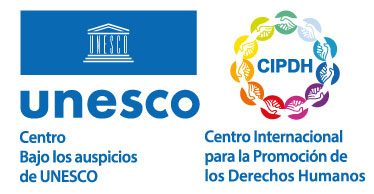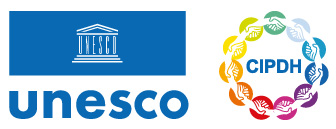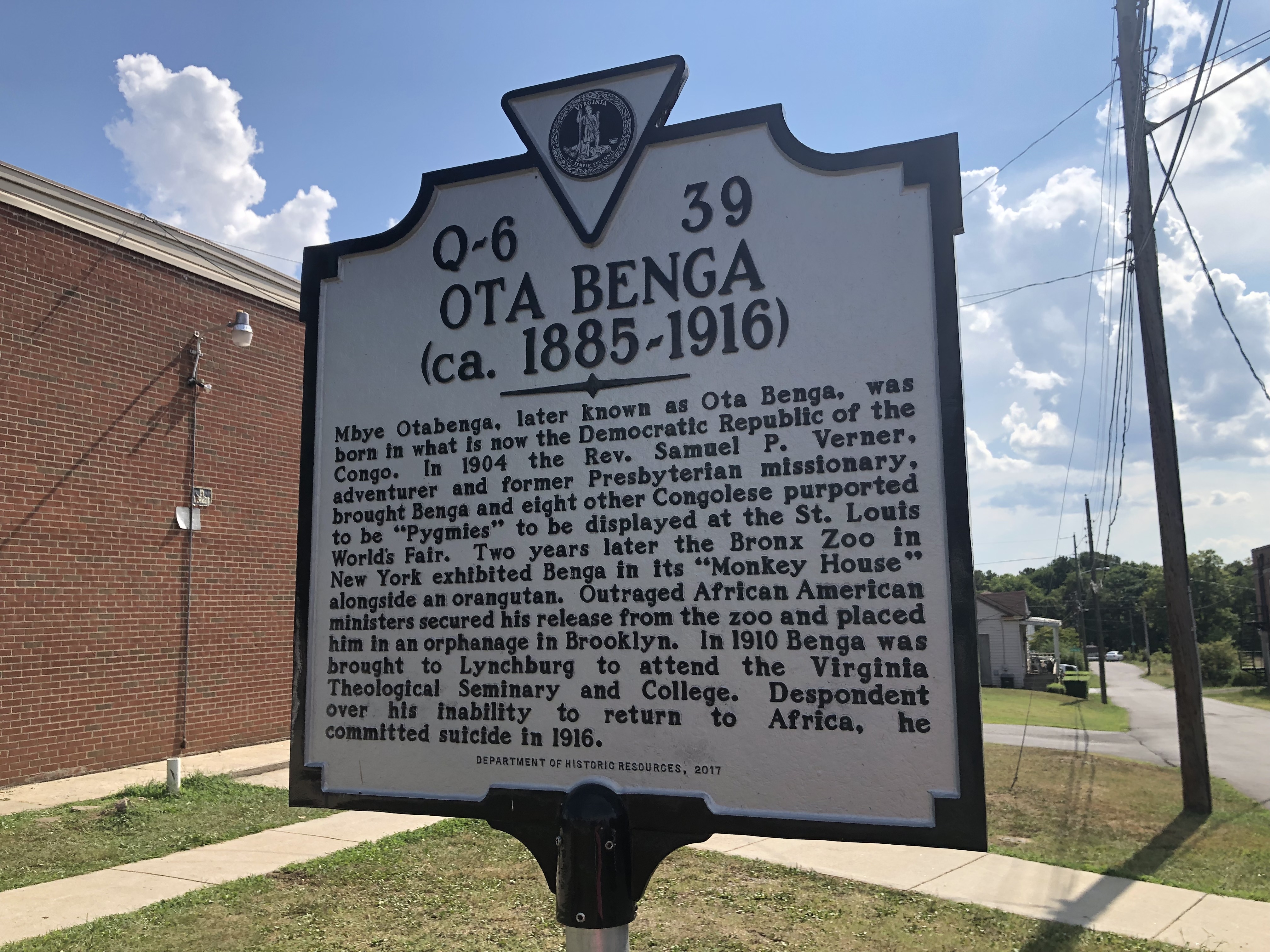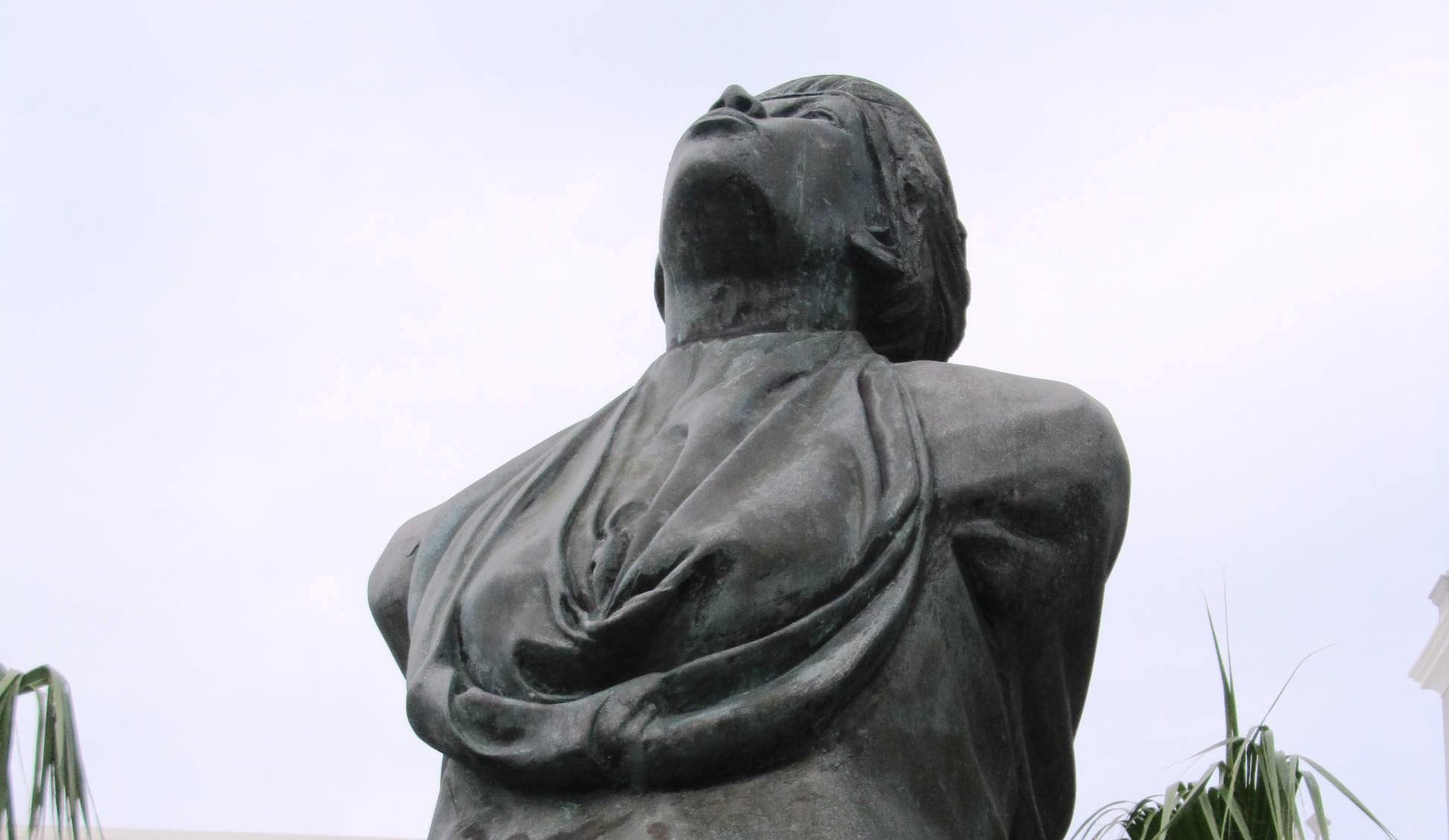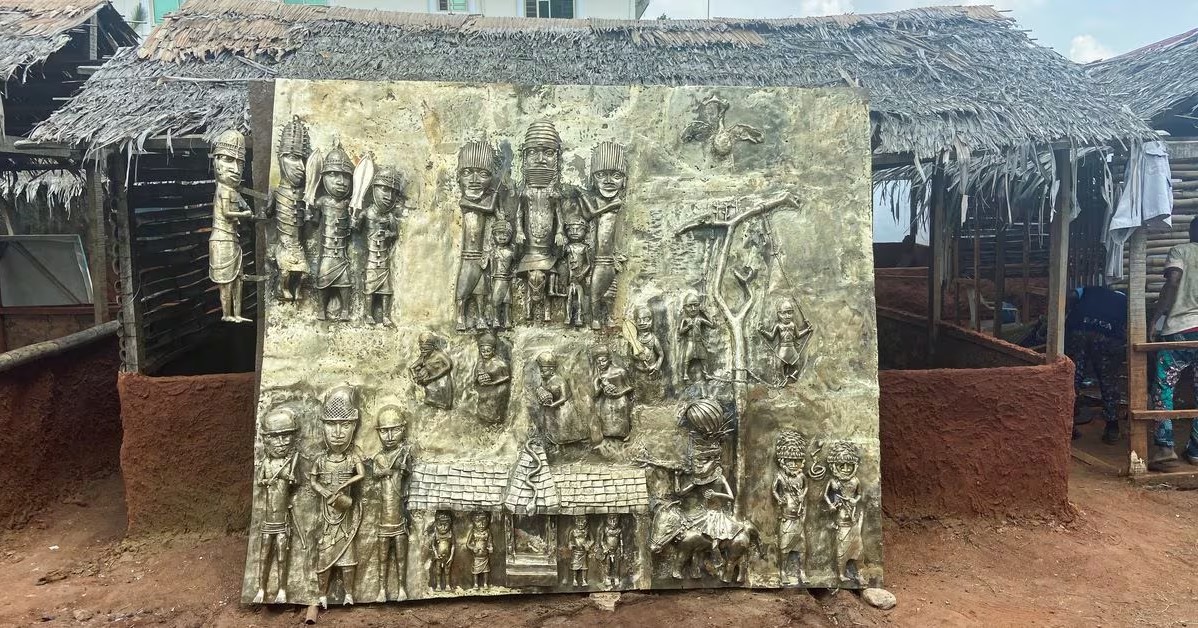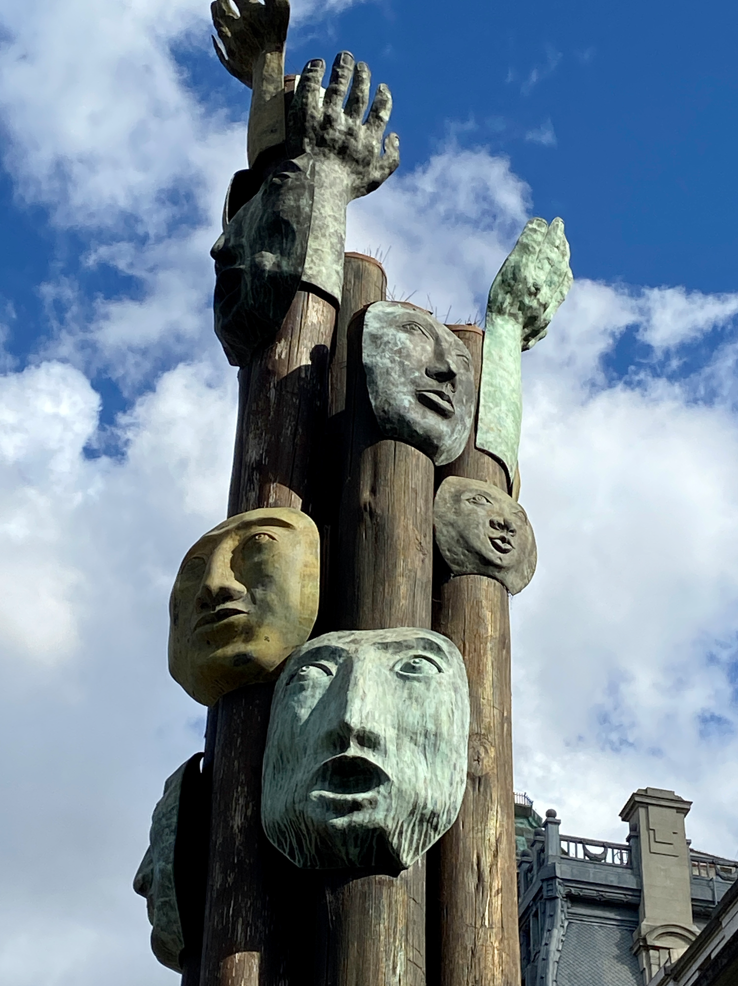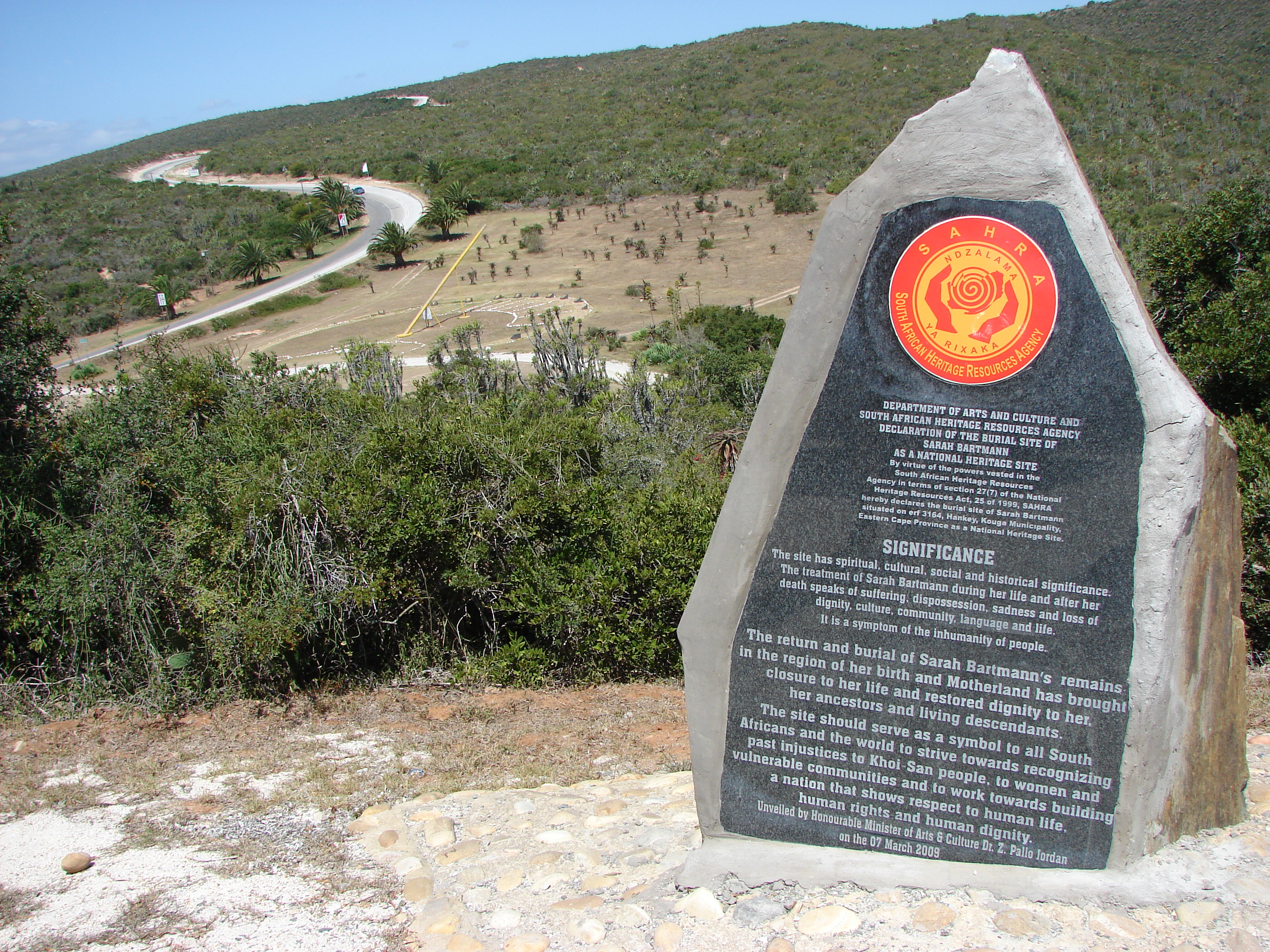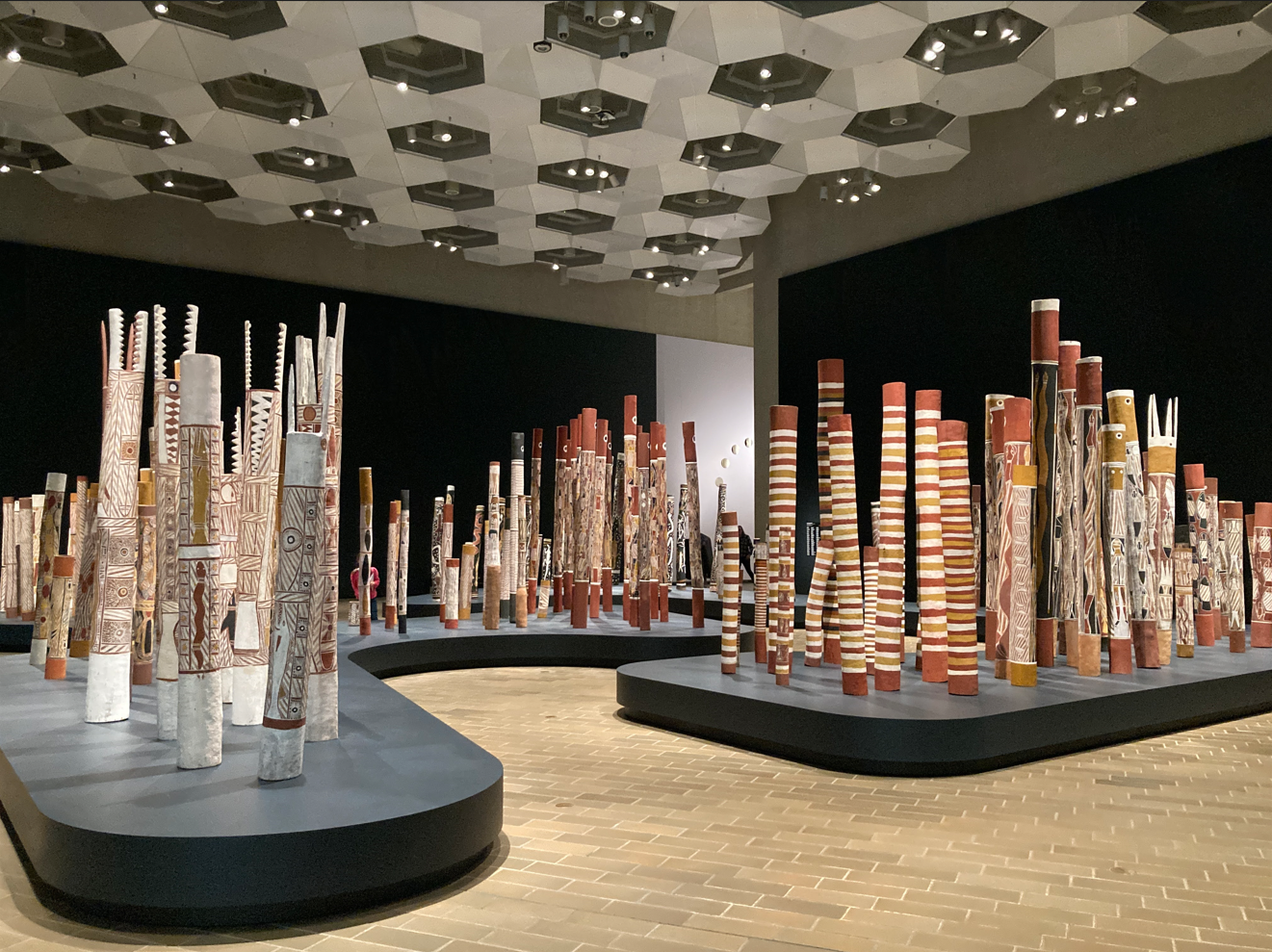Nkyinkyim Installation
Artistic heritage
Theme: Slavery

Address
Nuhalenya
Country
Ghana
City
Ada Foah
Continent
Africa
Theme: Slavery
Purpose of Memory
To honor individuals from various ethnic groups across the African continent who died during and as a result of the Middle Passage, as the transcontinental stage of the triangular slave trade between Africa, the Americas and Europe that took place between the 16th and 19th centuries is known.
Public Access
Free
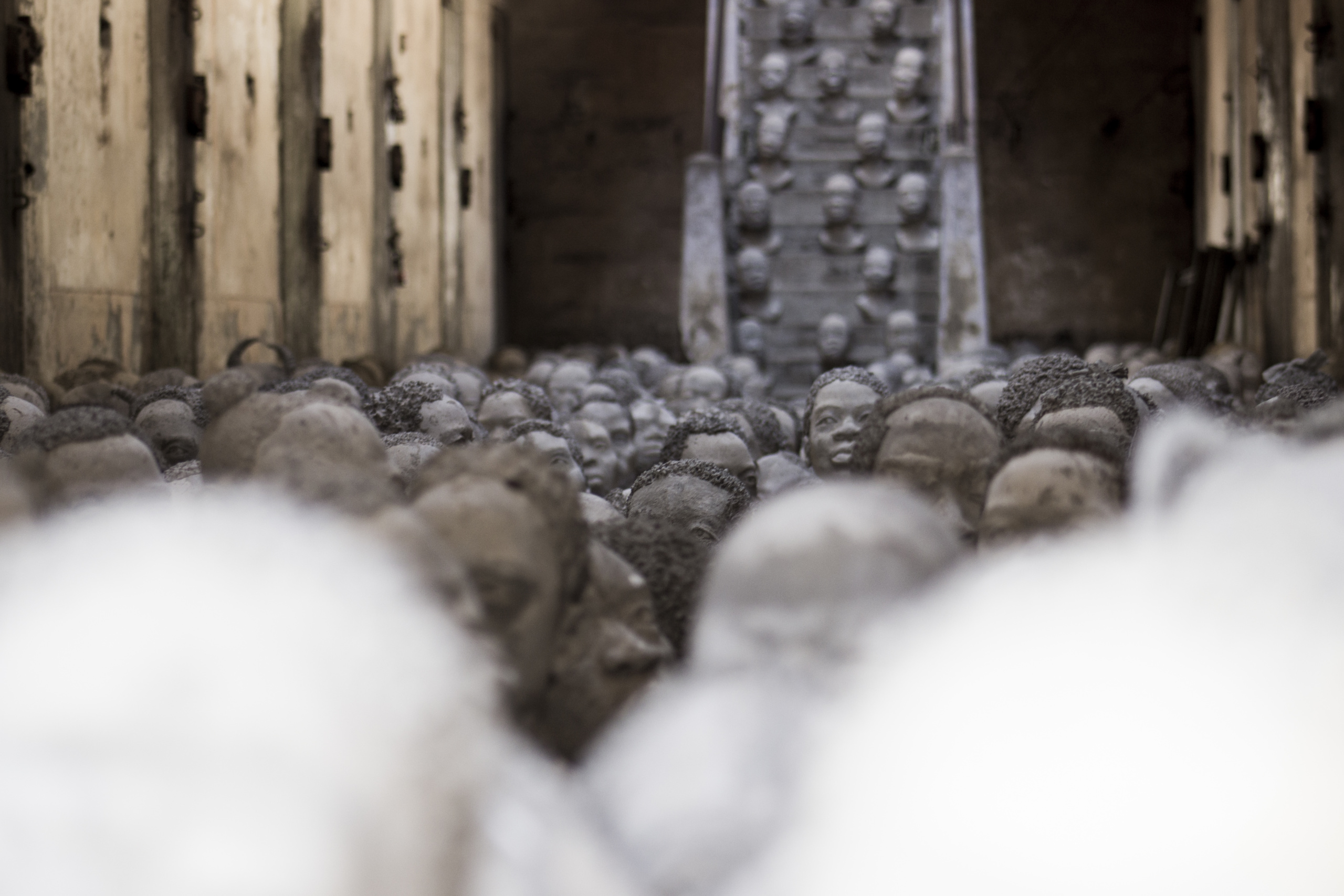
Location description
The Nkyinkyim Installation is a work in progress comprised of a set of 1,500 concrete human head sculptures and 3,000 terracotta sculpted heads, placed on the ground in rural Nuhalenya and inside the on-site building that will form a future museum. The heads represent in a naturalistic way the ancestors of the current inhabitants of the African continent who were forcibly displaced, traded, bought and sold during the colonial period and the transatlantic slave trade. The installation is part of the Ancestor Project, a collection of art projects assembled by a group of artists focused on African history and culture.
The transatlantic slave trade was the largest forced displacement of human beings over the greatest distance in history. Beginning in the late 16th century, the Atlantic Ocean became a trade route that integrated the histories of Africa, Europe and the Americas. Slavery and the slave trade were at the heart of this process. Labor of African origin formed the basis for the exploitation of exportable materials from the American territories, while sugar plantations absorbed more than two thirds of the slaves transported across the Atlantic by the major European and Euro-American powers. For several centuries, the slave trade was the main reason for contact between Europeans and Africans.
This migratory movement was concentrated in tropical or near-tropical areas. Some products that before European expansion to America were unknown or considered a luxury for Europeans could now be produced more abundantly, as long as there was sufficient labor to make profitable the exploitation of the resources offered by the new territories. Slavery or some similar form of forced labor was the path chosen by the colonial powers so that consumers in their countries would have access to tropical agricultural products, precious metals, and other materials.
The Middle Passage was the stage of the African slave trade in the Atlantic in which African slaves were transported to the Americas as part of the triangular trade that in turn brought manufactured goods from Europe to Africa to be exchanged for slaves. The proceeds from the sale of human beings were used to purchase raw materials that were transported back to northern Europe, thus completing the triangle. The First Passage began with the capture and forced march of African slaves from their homeland to the ports in Africa where they were traded; the Final Passage went from the landing in the destination country in America to the camp, plantation or place where they would finally settle down to work. The Middle Passage linked both instances.
It is estimated that the first European ship with a cargo of African slaves left Sao Tome for New Spain (now Mexico) in 1525 or 1526. Portuguese and Dutch traders, as well as British and French, dominated the African slave trade since the 16th century, although other European nations such as Spain, Denmark-Norway, Sweden, Poland-Lithuania, Prussia and others were also involved. The eight regions from which most of the enslaved and transatlantically transported people came from were Senegambia, Upper Guinea, the Windward Coast, the Gold Coast, the Gulf of Benin, the Gulf of Biafra, West Central and Southeast Africa.
During the Middle Passage, slaves were separated according to their phenotypic sex, kept naked and overcrowded, and men were chained for long periods of time. The average length of the transatlantic voyage from all regions of Africa was generally two months. During the slave trade era, poor food and hygienic conditions, the circulation of epidemic pathogens, constant physical, psychological and sexual abuse by captors, killings as punishment for or to prevent rebellions on board, high numbers of suicides and other factors such as attacks by pirates or enemy vessels and climatic hazards meant that the mortality rate was between 15 and 25 percent of those shipped. Current research estimates that approximately 12.5 million people were transported to the Americas during the Middle Passage period. Of these, it is estimated that about two million people died from causes directly attributable to the forced removal and its conditions.
The 4,500 pieces that currently make up the Nkyinkyim installation are a fragment of the 11,111 that the project aims to realize in 10 years, until August 2026. This multiple monument deals with the heritage and legacy of the African continent, with a section dedicated especially to the transatlantic slave trade. Once completed, the artwork/installation will consist of a wall-like monument bearing relief sculptures, as well as three-dimensional sculptures among which are the already fabricated heads, which will tell stories of the Ghanaian/African ancestors of the artists and the community creating them. The word “Nkyinkyim” is both an ‘adinkra’ symbol (Ghanaian symbols representing concepts or aphorisms) and a proverb. It refers directly to the journeys made by the ancestors and also to the journeys from where they migrated. It also refers to the physical form of the art installation, the planning of which includes twists and turns. The Nkyinkyim Installation, conceived and created by artist Kwame Akoto-Bamfo with the contribution of architect Delali Dziedzoave, is developed with the collaboration and support of the Ghana Museums and Monuments Board and the local communities of Nuhale-Hwakpo. Artists and apprentices from this locality and from Accra collaborate with the creation of the heads and the construction of the building that will make up the Ancestor Project Museum through structures made with organic materials and ancestral techniques.
“Nkyinkyim”, for the Akan belief originating in the territories of present-day Ghana and Ivory Coast, is associated with inscrutability, initiative, versatility and dynamism. Informed by the Akan funerary tradition called nsodie, which emerged during the 17th century and focused on commemoration and remembrance after death through portraits, Akoto-Bamfo and his collaborators set out to “honor both young and old, men and women, of various ethnic groups, who died in the Atlantic Ocean during the Middle Passage.” While the early nsodie depicted leaders and prominent figures in Akan society and were more symbolic than naturalistic in the rendering of their facial features, the Nkyinkyim Installation reinforces their evocative capacity through anonymity and naturalistic figuration concentrated on the expression of horror, shock, panic, suffering and anger of the faces depicted, capturing the primal emotions gleaned from countless testimonies of African men, women and children captured, displaced and forcibly traded during slavery in Europe and the Americas. The scale of the installation and the large number of sculptures elaborated and projected not only point to the quantitative magnitude of the people who suffered slavery in Africa, but also to assume the multiplicity of realities behind those victims: their belonging to different tribes, their status prior to the capture (ranging from prisoners of war to those who were directly kidnapped) and their level of awareness regarding the events of which they were protagonists.
The location of the sculptures in the on-site installation at Nuhalenya and in other places where it has been exhibited forms an essential part of his commemorative practice: the heads and torsos, some of them chained or blindfolded, are almost always placed at ground level, with the lower part below ground level. In this way, in quantity and side by side, they simulate a large number of people buried from the neck down. Some of the sculptures have been placed in the same way in a nearby lake.
Fragments of the Nkyinkyim Installation have been part of other similar projects. The most recognized of these is in the National Legacy and Memorial Museum for Peace and Justice premises (see our entry in #SituatedMemories) in Montgomery, Alabama (USA), where since 2018 111 heads have been on permanent display as part of the recognitions and commemorations of racial injustice’s victims. In 2017, 1200 of the heads that are part of the Installation alluded to the enslaved ancestors of the Ghanaian nation under the name “Faux-Reedom”, during the official celebrations for the 60th anniversary of Ghana’s independence. The aim of the work was to question whether the first African colony to gain independence from European rule is today truly free of slavery and colonization’s legacies.

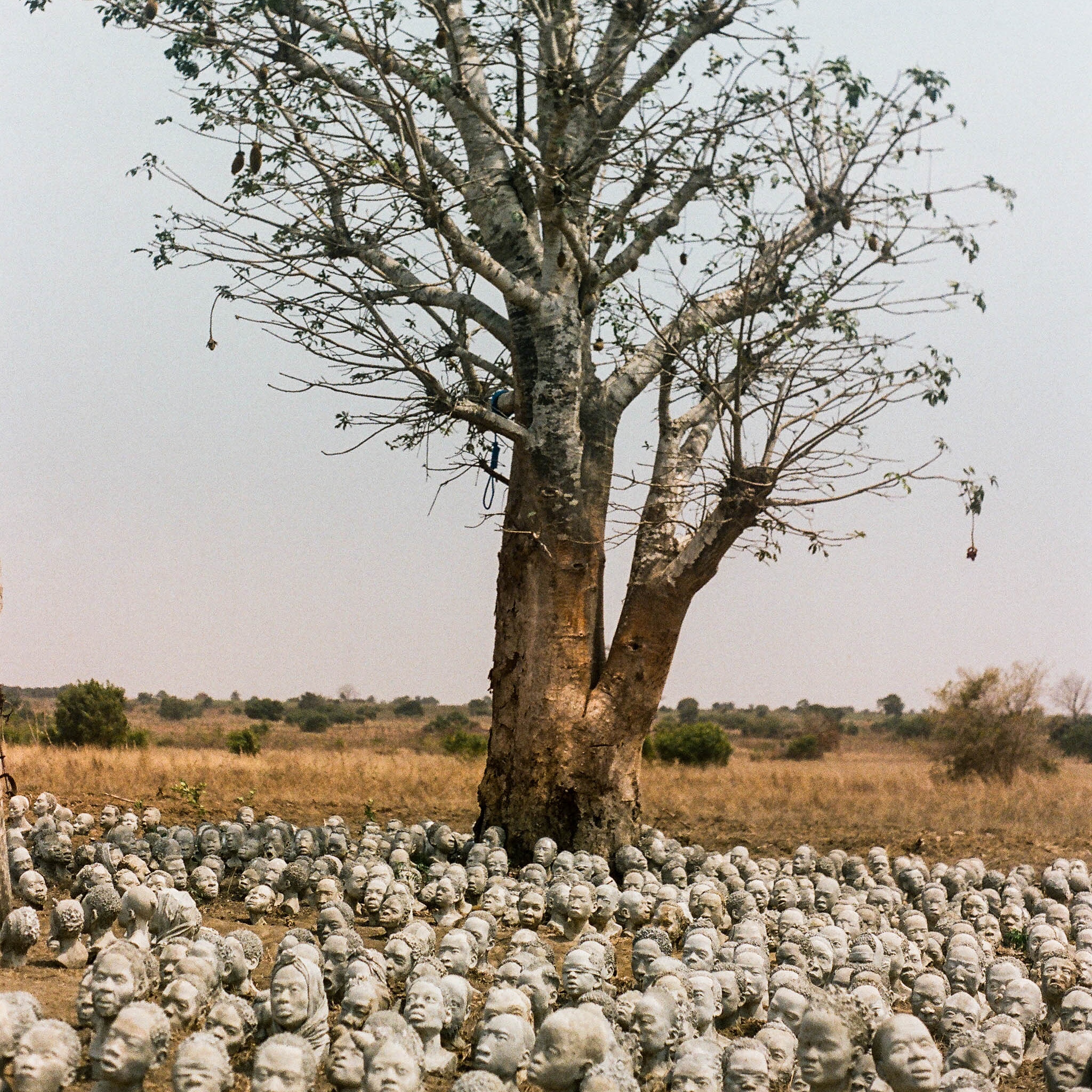
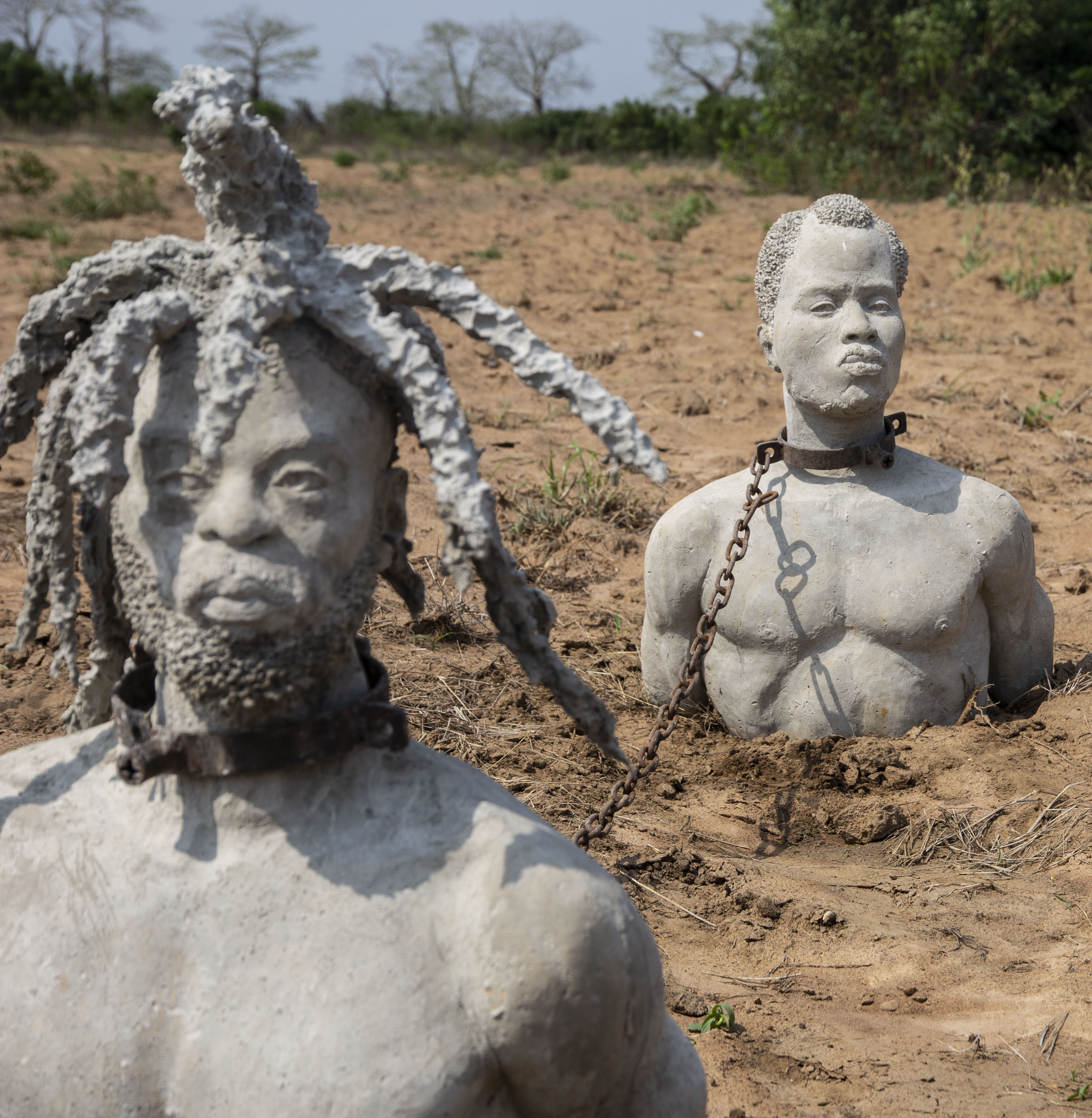
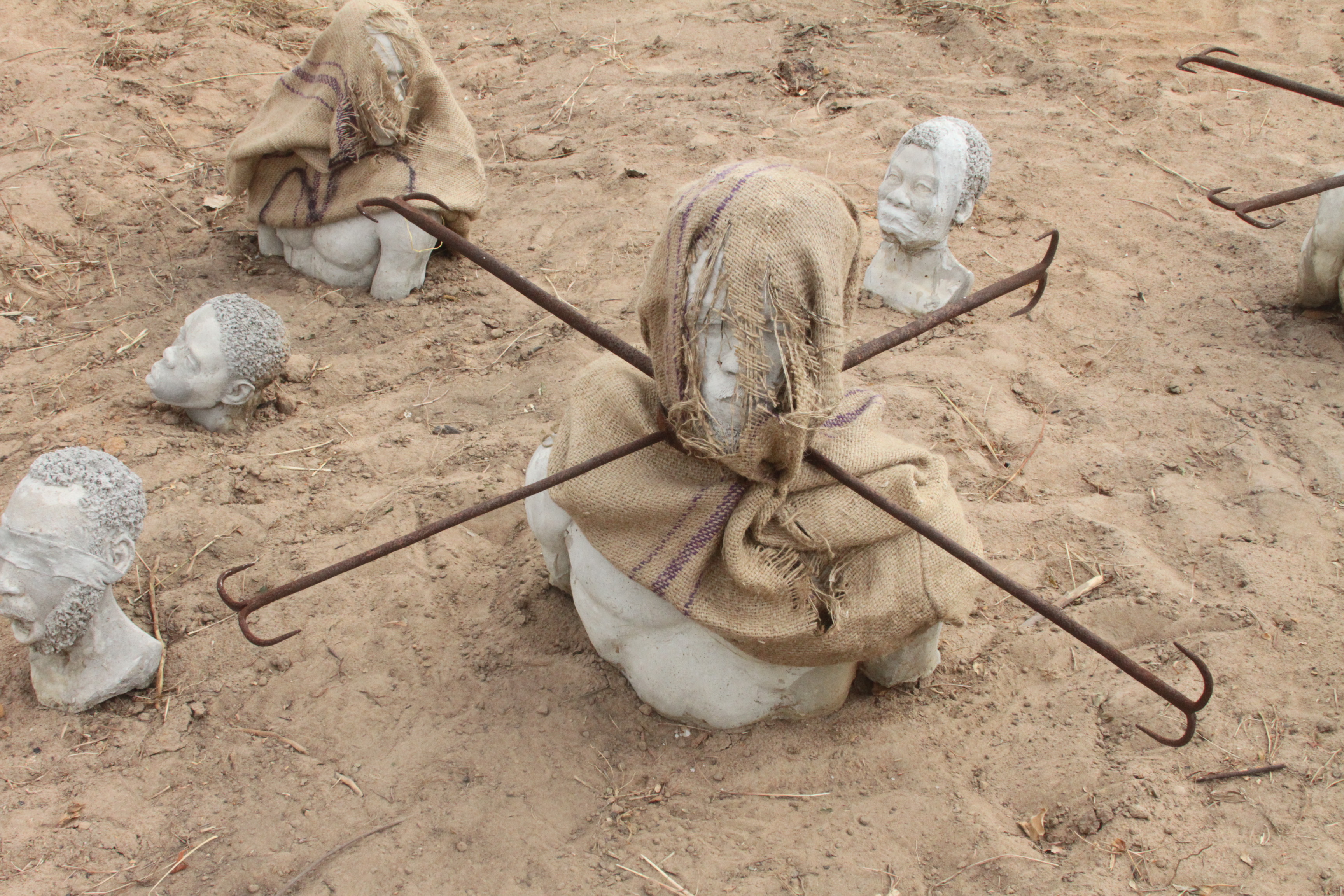
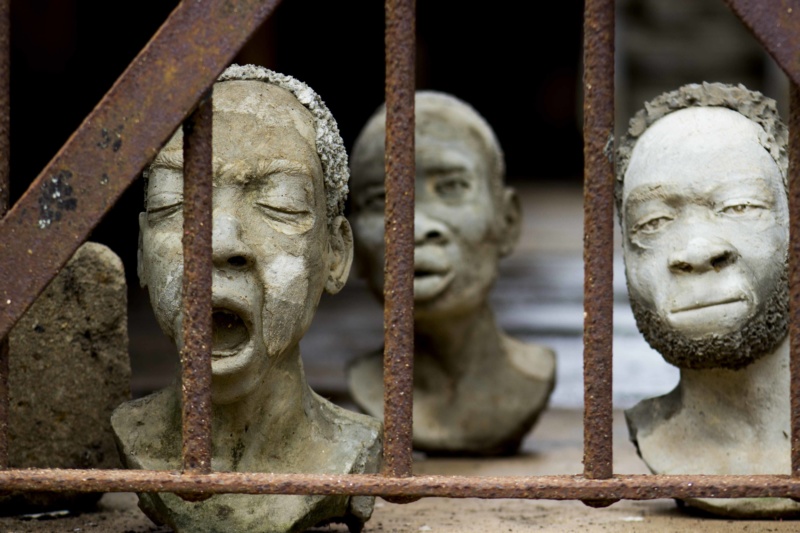
Links of interest
Ghana and the Slave Trade - Tracing Center
Acknowledging Ghana's slave trade history with sculptor Kwame Akoto-Bamfo | Design Indaba
Kwame Akoto-Bamfo: 'You see the faces of our ancestors' - BBC News
Meet the Ghanaian artist scupltoring Africa's history
Kwame Akoto-Bamfo and Building Restorative Justice Across the African Diaspora - Monument Lab
